Reflecting its growing portfolio of EVs globally, Mercedes-Benz India too has seen a steady inflow of battery electric vehicles over the last two years. The EQS and the EQB were key additions, chosen to not only fill gaps in the portfolio but were also meant to address a niche audience in the EV space. The EQS is meant for flagship buyers who need the exclusivity of ground-breaking new technology and features even while going green. And the EQB’s launch enabled Merc India to adopt a flanking strategy offering more versatility-conscious customers a vehicle with 3-row seating and the flexibility of a sports utility body style. Over the last few months, the EV ecosystem has progressed with more competing models from multiple other brands and an equally rapid rise in the charging infrastructure around the country. Merc’s own fast charging DC charger installations have grown and like them other brands are also opening up their dedicated charging stations for use by other brands too.
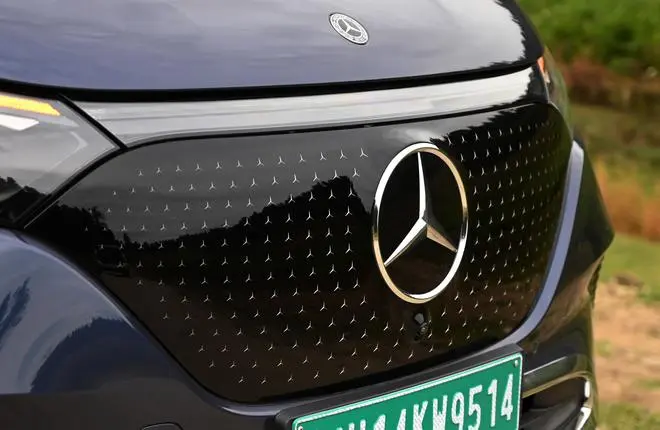
So, there are clear signs of a larger acceptance of EVs and that opens the possibilities of more vehicles filling gaps in the portfolio. Merc has adopted a positioning strategy where its ICE and EVs run parallel to each other with each of its clearly defined ICE segments beginning to have an EV twin. Last year, the E-Class and its SUV counterpart, the GLE saw the birth of their electric sibling in the EQE. With Merc adopting the same basic nomenclature for both the sedan and SUV versions for its EQ portfolio, the EQE is offered in both body styles, and the two are just identified as the EQE sedan or the EQE SUV. The latter is the one that Merc India has launched here in one fully-loaded variant and it has been priced at ₹1.4 crore, ex-showroom. Given the norm amongst EV buyers, who seek exclusivity, it is good to see that the EQE has been launched in the near top-spec EQE 500 4MATIC trim, and it is a fully-built import, unlike the EQS which is assembled in Merc India’s Pune facility.
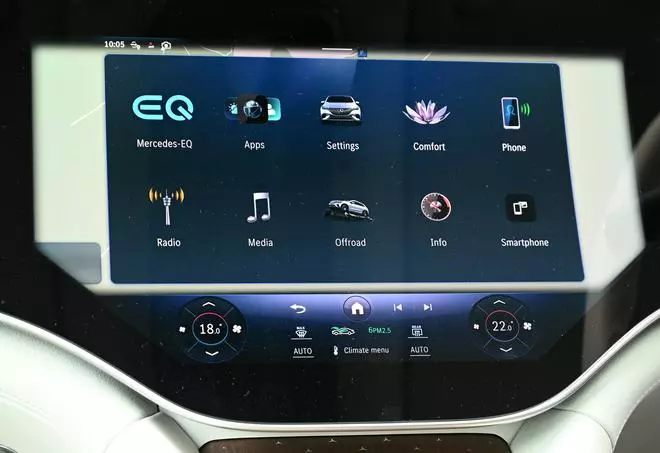
Design
The EQE’s exterior follows the design principles of its other electric siblings. Sinuous lines, glassy surfacing that almost looks like it would offer no wind resistance, tight shut lines and long panels dominate the exterior of the EQE. It gets the trademark EQ solid glass bonnet grille with the large 3-pointed star in the middle and a very sophisticated, yet familiar arrangement of radiating miniature logos embedded in the panel. The big bonnet features what looks like two power domes adding to the SUV stance when viewed from the front, even as the thick chrome faux under-guard complements this upright, raised profile while adding a key element of luxury to the EQE SUV’s design. Two small air intakes on either side of the front fender are meant to add some strength to the character and deliver some aero benefits.
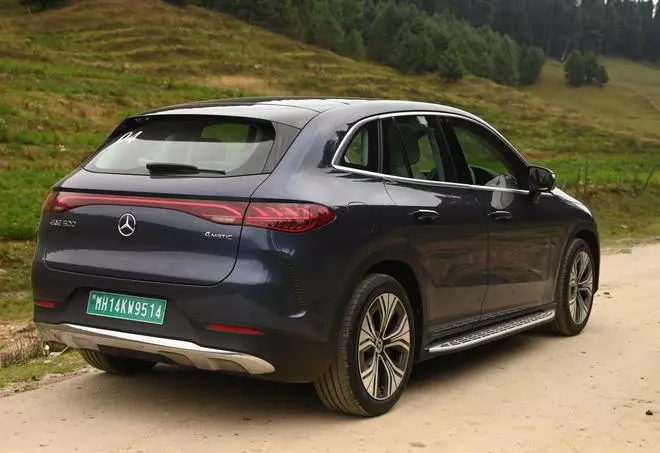
At the rear, the connected tail-lamps’ LED tubes sport a 3D helix pattern that delivers a very interesting high-tech imagery | Photo Credit: BIJOY GHOSH
The most striking bit of high-tech design element at the front is the EQE SUV’s headlamps. They sport Merc’s proprietary LED digital lights with 2.6-million pixels lighting up the road, improving efficiency, increasing light throw and automatically changing the pattern of light throw to avoid dazzling oncoming traffic. The LED light strip that connects the two headlamps is another EQ design signature. A steeply raked A-pillar makes the EQE’s design more aerodynamic, and even though that is a bit off the traditional SUV style, it still retains the more modern flavour of the body style. The three design elements that catch my eye when the EQE is viewed from the side are the retractable door handles (first seen in the EQS and is another aero optimisation move), the striking 20-inch light alloy wheels, and the illuminated floorboard. The chrome-framed window line with its characteristic orientation is another EQ signature. At the rear, the connected tail-lamps’ LED tubes sport a 3D helix pattern that delivers a very interesting high-tech imagery. The auto tailgate is a large unit with EQE 500 4MATIC badging on it. There is a black roof-spoiler that has been integrated flush at the top of the tailgate. A chrome under-guard and two diagonal slit-like air vents on either side of the rear fender are a couple of the other features at the rear.
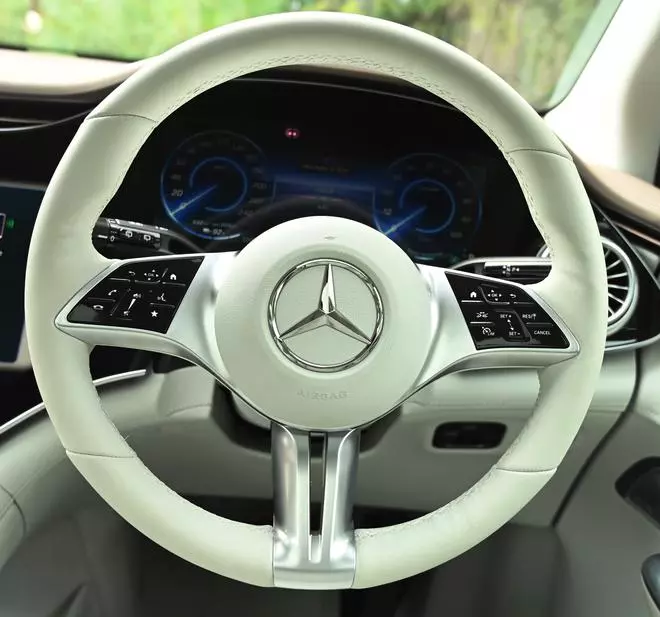
Cabin
If the exterior had several features that pointed to the EQE’s current position at the top of Merc’s electric SUV ladder currently, the cabin has more reminders. That 56-inch hyperscreen that we first saw and gasped in delight in the EQS’s cabin finds a second home in the EQE. The screen which essentially bonds and integrates three underlying screens is a visual and technological marvel and takes up pretty much all of the dashboard real estate. Like in the EQS, the EQE SUV’s hyperscreen has two embedded OLED screens underneath for the driver and front passenger, and then there is, of course, also the digital instrument cluster. Like in the EQS, the hyperscreen integration is fantastic and with the turbine-style aircon vents positioned on either edge, the sense of symmetry and proportion is also immense. The touchscreens offer haptic feedback and the sharp graphics and clearly laid out menu options make it quite easy to access all the key controls.

The hyperscreen integration is fantastic and with the turbine-style aircon vents positioned on either edge, the sense of symmetry and proportion is also immense | Photo Credit: BIJOY GHOSH
The EQE SUV’s cabin has the air of a flagship with the use of luxurious materials and attention to detail. The centre console features open pore magnolia wood with miniature 3-pointed stars in aluminium embedded into the panel. The cabin can be specified with two different Artico leather colours - Neva Grey and Black; my test mule sported the former and almost looked like a bright ivory. More flagship vibes kick in from the generously bolstered seats with their unique quilting. The front seats also gets 3-stage heating and cooling, and eight massage functions, in addition to being fully electrically adjustable. There is also discreet, active ambient lighting which adds a tinge of drama to some of the crafted trim elements, but can also offer a boost to the active safety warning systems in the event of risky lane changes or when brake assist kicks in.
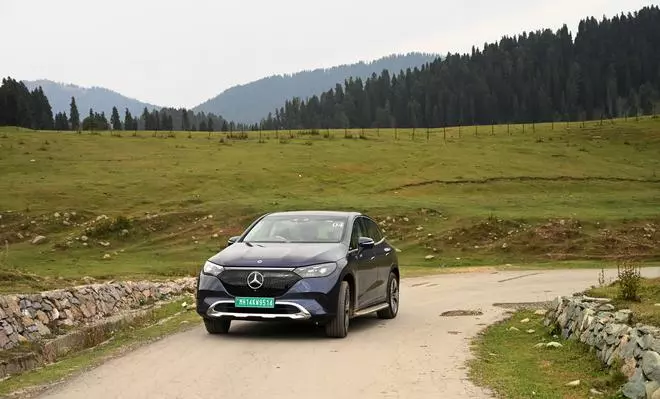
Space in the EQE SUV’s cabin is also very good with generous amount of kneeroom and headroom even for rear occupants. The driving position is excellent and the cabin is flooded with light even on an overcast afternoon in Gulmarg valley, where Merc India had organised the official media test drive. The touch control for operating the panoramic sunroof works perfectly, though the steering mounted controls can be a hit or a miss at times. The ‘transparent bonnet’ function that is being offered in the new GLC, with a real-time generated on-screen image of objects under the bonnet (using camera inputs) finds application in the EQE SUV too. The infotainment user interface is the latest MBUX NTG7 version. The system gets biometric facial and fingerprint recognition. There are multiple connectivity options available. The EQE also gets an excellent 15-speaker Burmester music system with a total system output of a whopping 710 watts. Other cabin features include a air purification system with HEPA filter and a heads-up display.
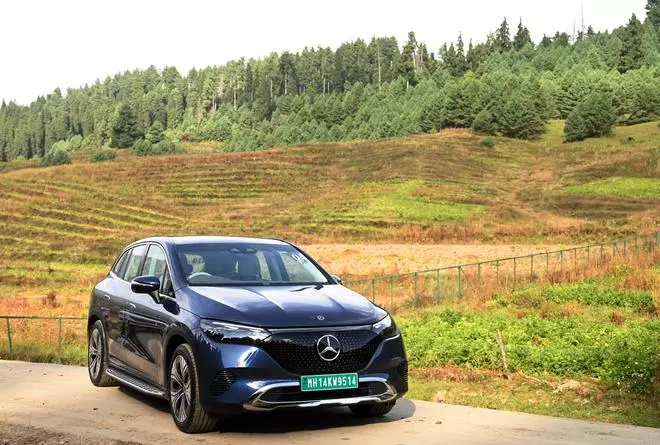
Performance
The new EQE 500 4MATIC SUV gets a dual motor setup — one on each axle; and as the name suggests, it is all-wheel drive. The 400-volt battery electric system packages a 90.5kWh lithium-ion battery pack under the floor of the EQE SUV. Merc says that the battery stack is cocooned within a protection zone under the floor and that the high-voltage system shuts off automatically in the event of a collision. The BEV system is capable of a potential, rated driving range of about 550km. Of course, the range will depend on driving style and road conditions. During my test-drive there was a lot of downhill driving and so the range calculation could’ve been skewed. But, it would be safe to say that real-world range could be anywhere between 400km to 450km on a full charge, which is fantastic for a large, heavy SUV. A full charge could take an overnight plug in or a little over a half hour for a 10-80 per cent top-up on one of the fast chargers at the nearest Merc dealership.
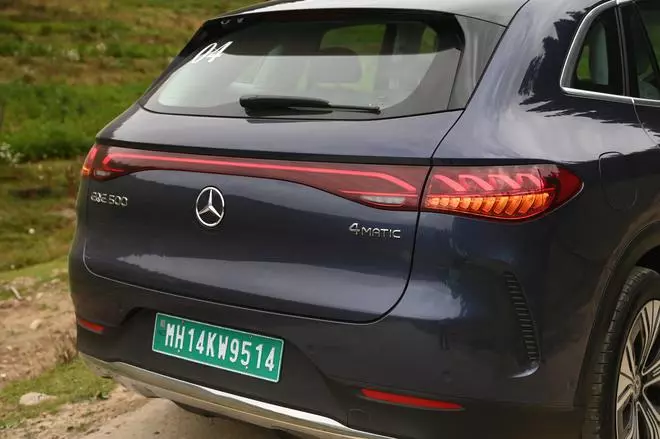
At the rear, the connected tail-lamps’ LED tubes sport a 3D helix pattern that delivers a very interesting high-tech imagery. | Photo Credit: BIJOY GHOSH
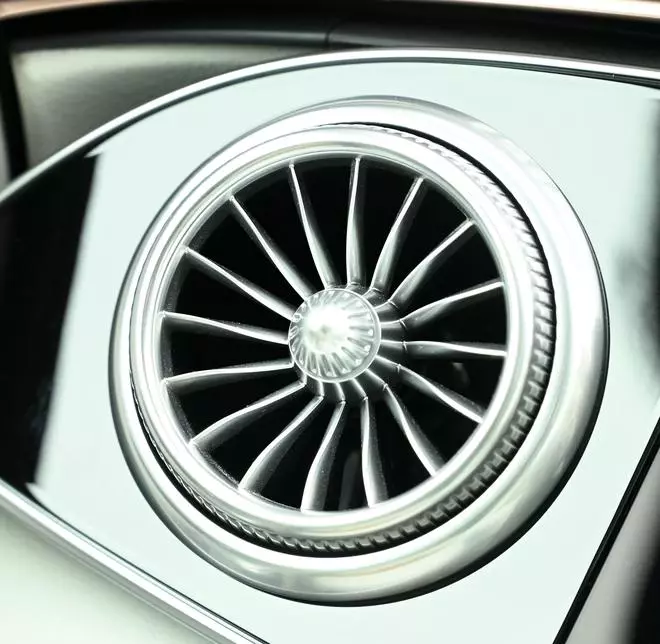
The electric motors in the EQE SUV deliver a combined output of 300kW (about 403hp) and a massive peak torque of 858Nm, all of which are available instantly from a standstill. The EQE SUV can and does accelerate like a sports car, with its 2.5-tonne kerb weight and some throttle mapping being what keeps the behaviour civil. It still manages the 0-100kmph run in 4.9 seconds say Merc officials. And its top speed is limited to 210kmph. Despite the brow-raising numbers, it is meant to offer a comfortable, well-controlled drive and a cushy ride. The India-spec EQE SUV also gets adjustable Airmatic suspension, the ride on which in comfort mode, and while seated on the quilted seat, feels pillowy and like the vehicle is just gliding over undulations. There are about five driving modes to choose from including off-road where the suspension is raised for an additional 20mm of ground clearance. The other drive modes are eco, comfort, sport and individual.
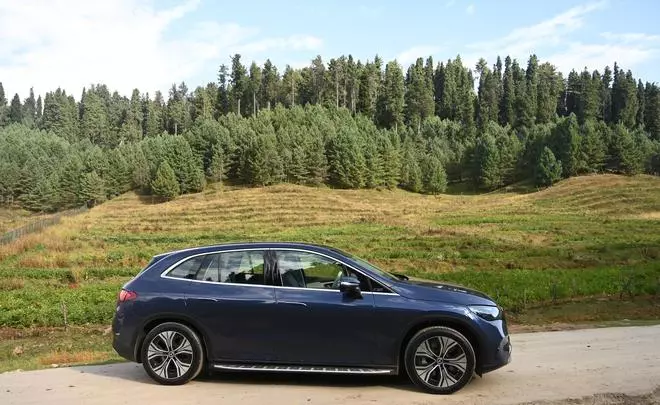
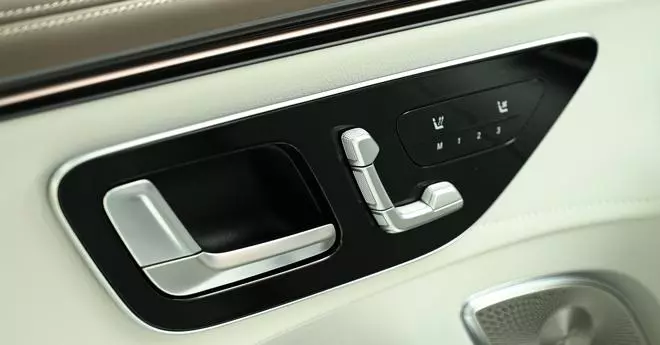
Sport mode is expectedly quick and it is genuinely fast, shunting my back deep into the seat when I floor the throttle. But even while doing that the acceleration seems controllable and linear. All the while, the cabin is quite with only a mild electronic whine that is barely audible. In fact, while on the fairly narrow streets around Gulmarg, I had to remind myself to use the horn at some of the sharp blind corners. Despite the suspension being a bit over-pliant, the lower centre of gravity from the battery makes it feel planted while driving fast into corners. The steering response is also quick and precise, while offering enough assistance in manoeuvring turns at city speeds.
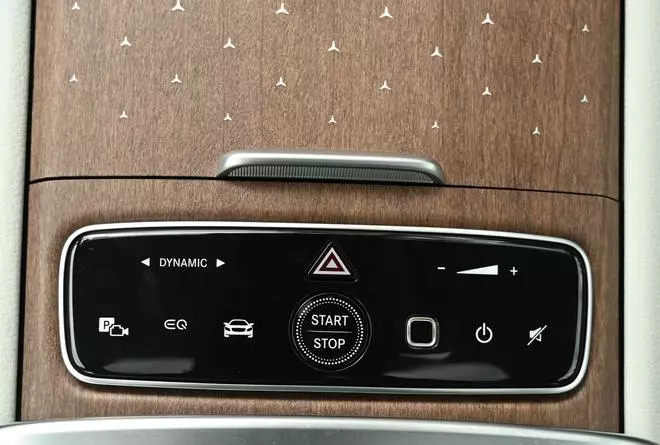
Bottom Line
The EQE SUV has a few niggles like the space in the 500-litre plus boot which is whittled down by the space-saver spare wheel. Also, like the setting in the EQS, the EQE SUV also gets a brake setting that starts regenerative braking for the initial bit of pedal travel and then starts the braking cycle. This can take a bit of getting used to. But, there are three levels of selectable regen braking, including a low interference cruising mode. Also like in the EQS, the emergency brake assist can give one a fright in the way that it engages, especially at low speeds and in the midst of pedestrian traffic. I had to turn it off every time I hit the start button.
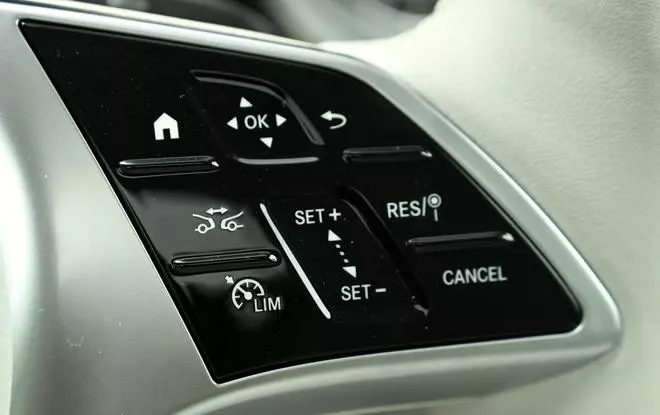
The EQE SUV is being imported from Merc’s Tuscaloosa plant in the US. Being a CBU, the pricing was expected to be at a premium. At ₹1.39 crore (ex-showroom), the EQE 500 4MATIC is expensive compared to other SUVs in its size and luxury class. But one does need to benchmark it with ‘EVs’ in the segment, and the fact that it is loaded with flagship levels of kit.







Comments
Comments have to be in English, and in full sentences. They cannot be abusive or personal. Please abide by our community guidelines for posting your comments.
We have migrated to a new commenting platform. If you are already a registered user of TheHindu Businessline and logged in, you may continue to engage with our articles. If you do not have an account please register and login to post comments. Users can access their older comments by logging into their accounts on Vuukle.